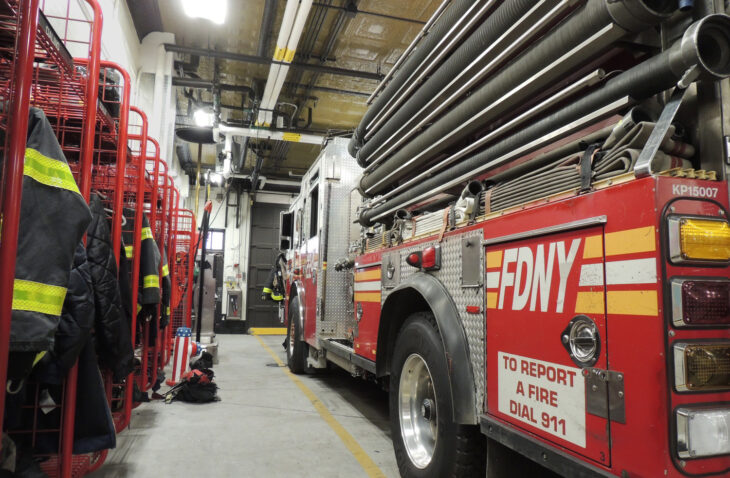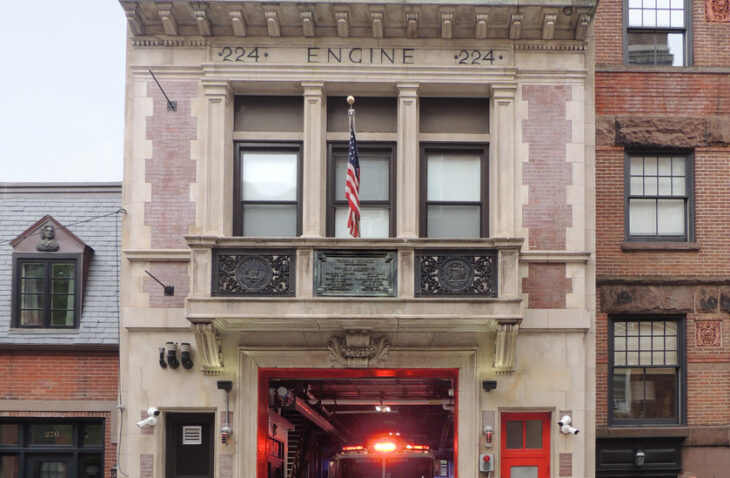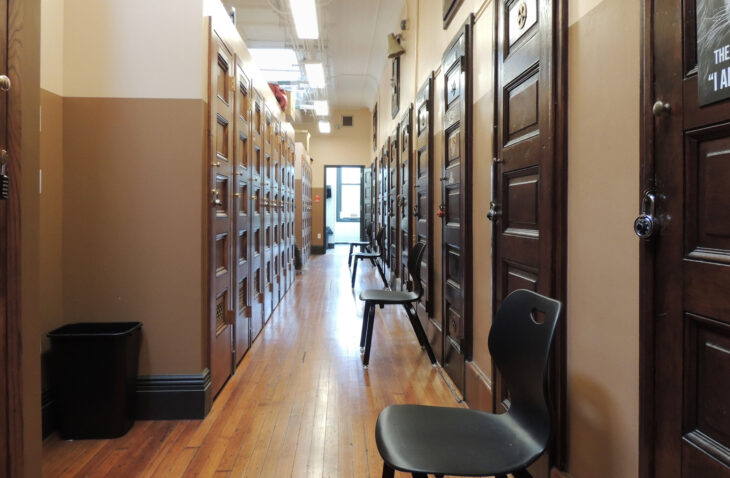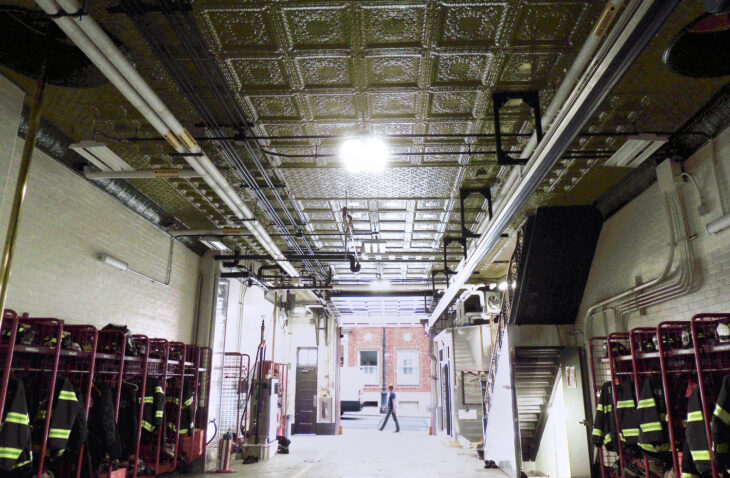Rehabilitation and Modernization
The project: The complete modernization and rehabilitation of the historic fire station, built in 1903, addressed the station’s cramped spaces, inadequate natural light, the risk of vehicle exhaust and bunker gear pollutants contaminating the living area, and updated the power availability, structural capacity, and operational efficiency.
The goal: The project needed to meet modern quality of life standards for firefighters and building codes requirements. The design also needed to include energy conservation measures.
Project highlights: In addition to incorporating modern technology and structural integrity upgrades, the design addressed the lack of basic facilities for female firefighters and disabled visitors by adding separate women’s bathroom and locker room suite, and a first-floor accessible bathroom. Additionally, radiant heating in the new apparatus floor slab provides improved environmental control and energy use.
Challenge: The existing building presented the risk of vehicle exhaust and bunker gear pollutants contaminating the living area. Solution: The station’s kitchen was relocated from the first floor to the second floor to create environmental separation from the apparatus floor and vehicle exhaust, and the health and wellness room was relocated to the third floor, where there is maximum natural light. The existing power availability was inadequate. Solution: The design included a natural gas generator installed for continuous operation in the event of a terrorist attack, natural disaster, or other emergency.
Challenge: The existing facility provided extremely limited available space, and an addition was not possible due to the lot-line building, nor was a vertical extension permitted due to landmarks designation. Solution: The design team successfully reprogrammed the site and replaced the structural apparatus floor without compromising the building’s stability or appearance.
Challenge: Severely corroded steel was found under the first-floor slab during demolition. Solution: The scope of the existing structural removal and replacement was extended, while construction continued.
Project outcome: The project not only updated the inadequate infrastructure, operational inefficiencies, and outdated structural capacity—it received enthusiastic praise from the community, Department of Buildings inspectors, the Landmarks Preservation Commission, and the firefighters using the station. It also received a Merit Design Award from the Fire Industry Education Resource Organization (F.I.E.R.O.) in 2024.












